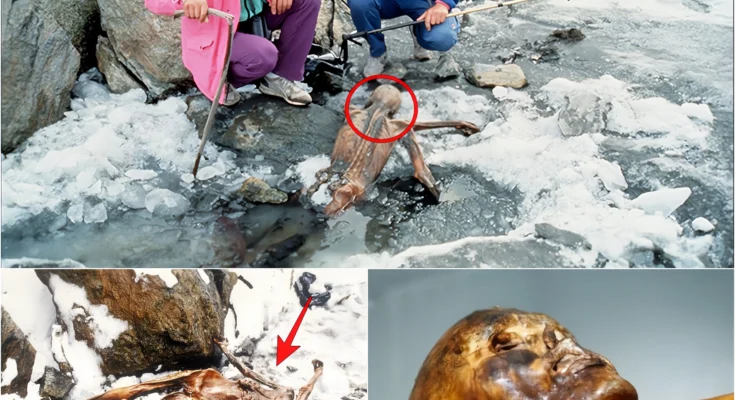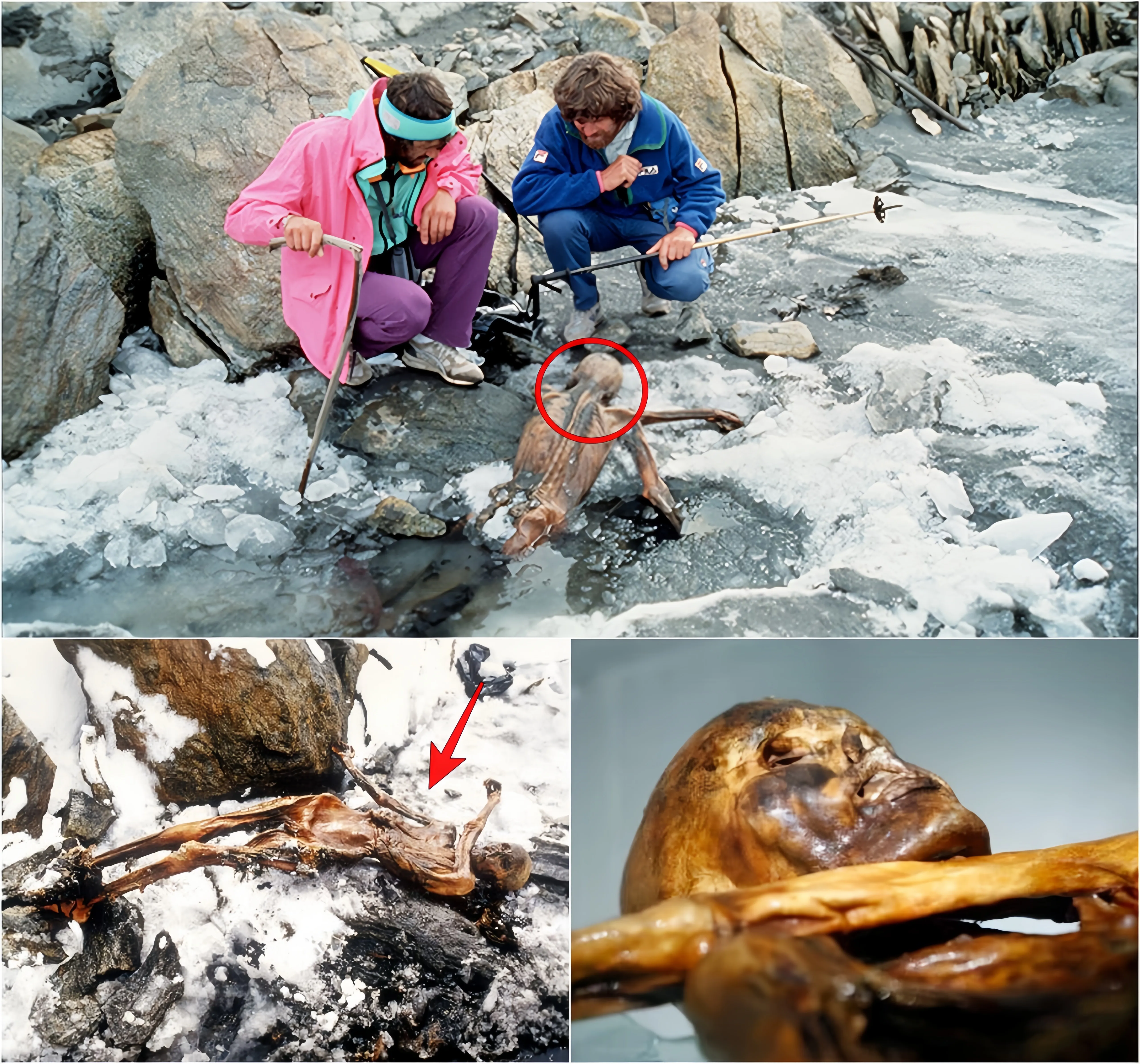
In 1991, high in the Ötztal Alps on the Austrian-Italian border, a discovery was made that would rewrite history: the frozen, well-preserved body of a man who lived more than 5,000 years ago. Dubbed “Otzi,” after the region in which he was found, the mummy has since stunned scientists with his incredible preservation and the ancient mysteries he carries.
Two hikers stumbled upon the mummy while trekking through the Alps, unaware that they had found one of the most significant archaeological discoveries of the century. Frozen in ice for over 5,300 years, Otzi became a time capsule from the Copper Age, offering unparalleled insights into prehistoric life.
When Otzi was first unearthed, archaeologists and scientists were shocked by how well-preserved his body and belongings were. His skin, tattoos, clothing, and tools survived centuries of ice, providing a glimpse into a period often shrouded in mystery. But it wasn’t just his preservation that astounded scientists — it was the many unanswered questions surrounding his life and death.
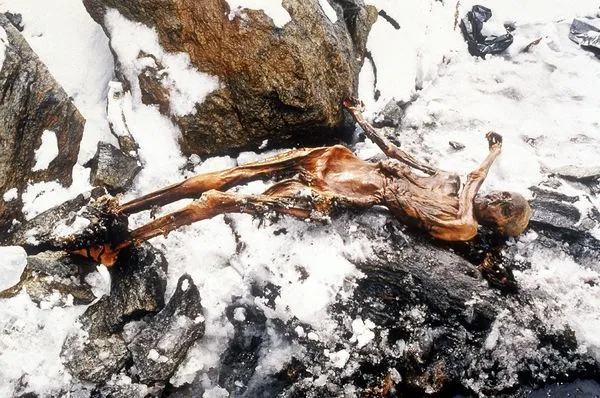
Otzi’s body has been meticulously studied, revealing that he was around 45 years old when he died — relatively old for his time. His clothing, made from animal skins and grass, suggests he was well-adapted to the harsh alpine environment. His tools, including a copper axe, flint knife, and arrows, indicate he was skilled in survival and warfare.
But one of the greatest mysteries is the presence of over 61 tattoos scattered across his body. These simple, dark lines and crosses appear to have been placed near joints and along his spine. Scientists believe they may have been used for therapeutic purposes, possibly an ancient form of acupuncture.
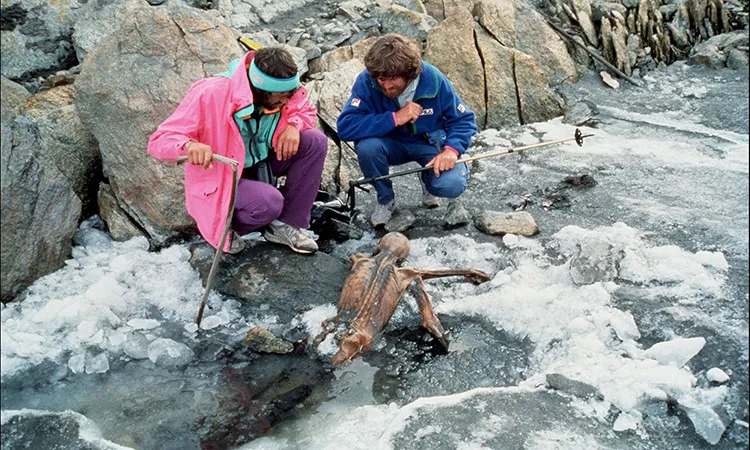
Further investigation into Otzi’s remains revealed that he did not die from natural causes. He had been murdered — likely shot with an arrow. A wound in his shoulder, combined with DNA from other people found on his weapons, suggests Otzi may have been involved in a violent confrontation before his death. The discovery of brain damage and injuries to his hand also indicates he may have fought off an attack.
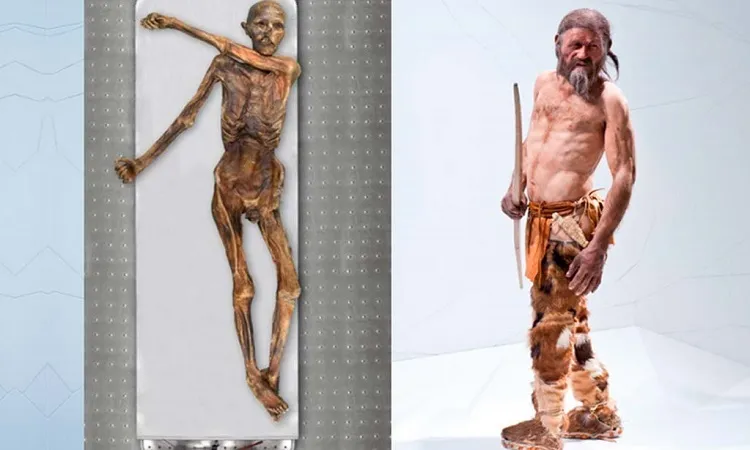
Who killed Otzi, and why? These questions have haunted researchers since his discovery. Some speculate he was a victim of a territorial dispute or a ritual killing. His injuries suggest a struggle for survival in a dangerous world.
Analysis of Otzi’s body has also shed light on the health challenges faced by prehistoric people. Researchers discovered that Otzi suffered from joint pain, heart disease, and even Lyme disease. His stomach contents revealed his last meal: grains, wild meat, and plants. Remarkably, Otzi’s teeth showed signs of heavy wear, likely from a diet of coarse food, but no signs of dental decay — a rarity in modern humans.
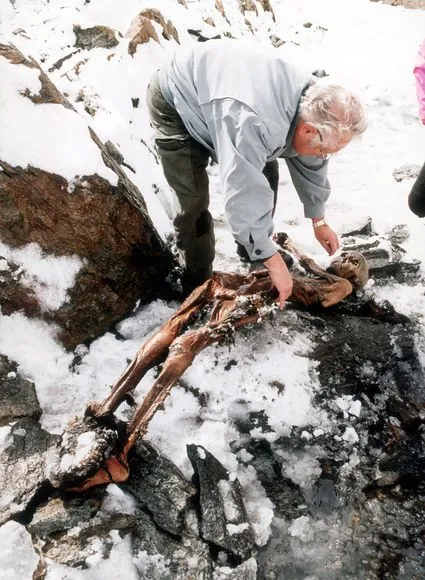
Otzi’s discovery continues to captivate scientists and the public alike. His well-preserved body offers endless opportunities to explore not just his life, but the broader prehistoric world he inhabited. Each new study unearths more about ancient human history, from health practices to dietary habits, survival skills, and even social dynamics.
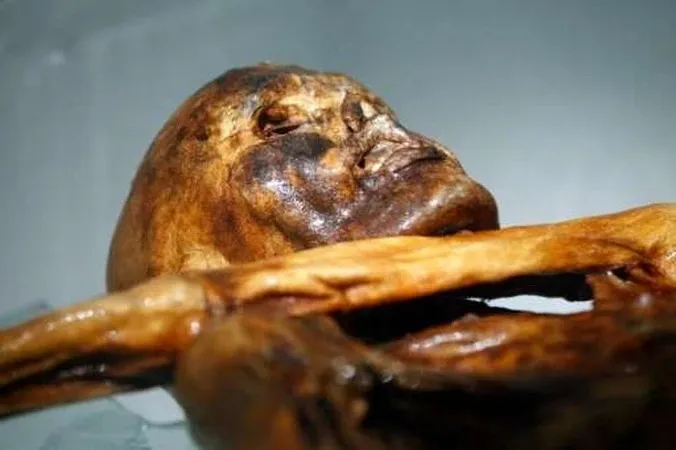
More than three decades since his discovery, Otzi still guards his secrets, leaving us with more questions than answers about his life and death in the ancient Alps. His frozen form serves as a chilling reminder of the fragility and complexity of early human existence.
